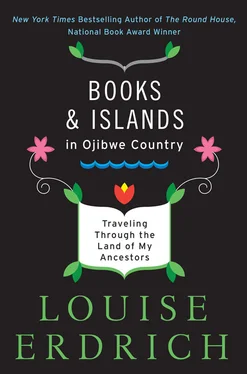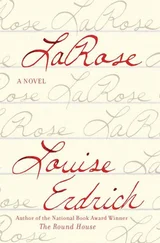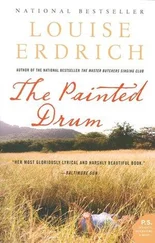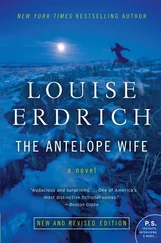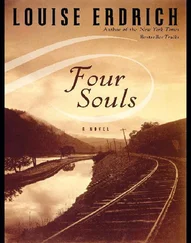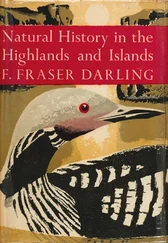Signed, goddamnit, I’m positive!
Mary tells me that Ober had left no will regarding the island and his books and cabins, so that ten years passed while all of the legalese was sorted out. During those years, the books were alone. I brood on this. The books. Alone in the cold and through the humid summers, alone in the cabins for ten years as roofs collapsed, alone as squirrels invaded and dismantled eighteenth-century bindings to line their nests with rare pages. I am afflicted with such melancholy at the thought of the books all alone on the island that I have to walk back to Ober’s house, to nap with Kiizhikok, to settle my mind. This whole island, filled with books, and no one to care for them! I would have liked to have been here. I imagine it as something like living in a great Cornell Box, only while Joseph Cornell’s visual themes were white spheres and tiny glasses and peeling cubicles and star maps that suggested vast compressions of time and space, here the themes would be the books, the words stacked endlessly. Spine to spine, margin to margin. Peeling, curling, waiting in a thrilling passivity for someone — like me!
There was an original Edward Curtis portfolio of portraits of American Indians among the books. I’m glad that I don’t know what else. Some of the most valuable were sold once the little foundation of Oberholtzer’s friends and supporters was formed. In a panic of retrieval, some were bought back. But a piece of the careful intention and depth of Ober’s collection was lost. Still, the collection is for me both a caution and an inspiration. It is surely a good thing that Oberholtzer devoted only a portion of his vast energy to book collecting. He was a dedicated bibliophile, careful and disciplined, ordering books from London booksellers with great specificity and detail, and receiving notes and invoices in return, some of which are still tucked into the pages of his books. Nicholas Basbane’s wonderful book on book obsession, A Gentle Madness , begins with a description of the difference between the bibliophile and the bibliomaniac:
With thought, patience, and discrimination, book passion becomes the signature of a person’s character. When out of control and indulged to excess, it lets loose a fury of bizarre behavior. “The bibliophile is the master of his books, the bibliomaniac their slave,” the German bibliographer Hanns Bohatta steadfastly maintained, though the dividing line can be too blurry to discern. Whatever the involvement, however, every collector inevitably faces the same harsh reality. After years spent in determined pursuit, a moment arrives when the precious volumes must pass to other shelves. Some accept the parting with calm and foresight; others ignore it entirely. Some erect grand repositories as monuments to their taste, others release their treasures with the whispered hope that they reach safe harbor in the next generation.
Whatever Oberholtzer’s intentions were, I’m happy that his island is still filled with the books he pursued and acquired. Other than actual writing, the books a person leaves behind reflect most accurately the cast of that person’s mind. If his spirit is with the spirit family living on the island, as some believe, then I’m sure that Ober misses his chief treasures, but feels relieved that the collection is more or less intact. For his assemblage does reflect his character, as the best collections do. His books on exploration, the great north of Canada and the Arctic, and his painstakingly procured works on Native American life, as well as the volumes of poetry he so loved and the works in German and the books on music, probably reflect as much as anyone can know of him.
Ober and the Ojibwe
One of the reasons, I think, that Ober so loved and was fascinated by the Ojibwe is that he loved the books in the people. He loved the oral tradition of storytelling, where the person becomes the book as in Fahrenheit 451. His Ojibwe name, Aadizookaan, means traditional story. As Pebaamibines tells it, Oberholtzer was always entering a circle of Ojibwe asking eagerly, “Aadizookaan? Aadizookaan?” And so, as Ojibwe do, he was affectionately nicknamed. He recorded several stories but never did complete a collection, or indeed, write the books he meant to about the Ojibwe. He hadn’t, perhaps, the degree of passivity it takes to actually sit down and write a book. Or he hadn’t the patience, maybe, to sit down long at all. His phenomenally active life benefited his Ojibwe friends in many ways, not the least of which is in the area of conservation, and now, in the ongoing hospitality that the board of the Oberholtzer Foundation has shown toward Ojibwe people, Ojibwe writers and language teachers, storytellers. During this retreat to the island, for instance, I am able both to take notes for this book and to work with Keller Paap and Lisa LaRonge on details of the first book that our nascent publishing house, Birchbark Books, will publish. It is a book by a gentle and deeply knowledgeable Ojibwe elder named Nawiigiizis. Ober definitely would have added this book to his collection, and as I leave I promise to send it, and this one, too, up north to the island of books.
Telephone
We’re going to make the drive straight down to the Cities without stopping, so I keep Kiizhikok awake throughout the last morning on the island, until we are on the road. To keep her eyes open just a little longer, I break out a toy called Alpha-Bug, who says, “hey, that tickles,” when she’s turned on. Press the Alpha-Bug’s feet and she says a letter and can also make the sound of the letter. You can even get her to say whole words, though not suggestive or swear words. My older daughters have discovered that Alpha-Bug won’t even say the word “sex.” How did they do that? These toys made with sound chips did not exist when my other children were young. Kiizhikok happily presses green plastic bug feet until twenty miles south of International Falls, when the letter D puts her to sleep.
I have only been in sporadic phone contact with my daughters during this trip, which causes me great anxiety. I know they are fine — as they are teenagers they each have a life project they’re embarked on. One is making a film in London, one is studying in the Berkshires, one daughter is part of an international choir. Oddly, it has been easiest to talk to my daughter in London. I sat on a polished log chair at the one radio phone available on Ober’s island, and she stood at a phone booth just outside King’s College, using a phone card. We compared notes on food. She had found it best to frequent a Greek deli near the school instead of relying on cafeteria sandwiches made of mashed corn and chicken. I had found it best, in Canada, to rely on a trail mix heavy on dried fruit, except of course for the memorable lunch at Kay-Nah-Chi-Wah-Nung and the food shared with Ojibwe food-lovers on Ober’s Island.
Now, as I merge just past Cloquet, Minnesota, onto 35 South heading back to Minneapolis, the little cell phone I’ve taken, silent all along, makes a triumphant tootling sound at the end of its plug-in cord. I start dialing, and talk to my daughters from the road, check in with my household and with my bookstore people, with my sisters and parents. All of a sudden I am back in the web of connection.
I am on the mainland, dry land, off the islands. Or so I think.
Return
We arrive. We return. Home is familiar and it is disorienting. For days, I’m not quite here and not quite there, but muddle around trying to enter the stream of my life. There is a sad discovery. The city forester has painted a blazing red ring and the letter A , sign of doom, around Old Stalwart’s trunk. This tree is older than the house, and I’ve carefully had it treated with a protective fungicide every few years to discourage Dutch Elm disease. The treatment doesn’t always work. I knew that. But it’s like a friend of mine is stricken. The tree is the classic fluted shape and raises immense and graceful arms high above our three-story house. I love elm trees — grooved bark and sawtooth leaves and fluted silhouette. I think the Earth has chosen to praise the sky by growing this tree.
Читать дальше
